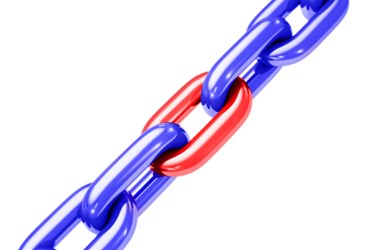BioMarin Transforms Supplier M&A Into Joint Ventures

By Louis Garguilo, Chief Editor, Outsourced Pharma

To navigate a choppy sea of supplier and CMO consolidation, Isaac Young, senior director, supply chain operations, BioMarin Pharmaceutical Inc., offers some advice: Approach your outsourcing relationships like joint ventures.
Today sponsors may find themselves working closely with fewer but bigger supply-chain partners. “As you have this greater engagement between two companies,” says Young, “you’re likely to enter an interdependent relationship. Why not acknowledge that rather than try to power-play or position one another?”
These Are Not That Word
I’ve probably used the word “partner” a thousand times while writing about the biopharma outsourcing industry. Thankfully, Young thinks the word should be retired. “I avoid it,” he says. “It’s overused, and means different things to different people. To really get to the synergies and common goals I’m trying to move us to, you need the stronger feeling of joint ventures.”
 He says a JV can be looked at starkly as “an acknowledgement of codependency.” But instead of fomenting fear, both sides – CMOs also are hesitant to put too many eggs in one client’s basket – need to use the nature of that dependency as the foundation for investigating efficient responses to the new reality, and to extract optimal value.
He says a JV can be looked at starkly as “an acknowledgement of codependency.” But instead of fomenting fear, both sides – CMOs also are hesitant to put too many eggs in one client’s basket – need to use the nature of that dependency as the foundation for investigating efficient responses to the new reality, and to extract optimal value.
“Move towards full collaboration and alliance – I’m staying away from that other term – and to the joint-venture structure,” says Young. “There’s a real opportunity with such a level of transparency, and an understanding of what both parties need to get out of the relationship.”
No Fear In Paying More and Single Sourcing
Sponsors have already channeled concerns about supplier M&A into action plans. An immediate impact is the elevated emphasis in the vendor selection process on future stability, and potential competitor integration. This includes asking questions such as: What is the relative market position of the CMO compared to its competitors? Does it have capital for future equipment and other investments? What is its overall business strategy (e.g., integrated services or specialty focused)?
Despite the added complexity of these risk assessments, Young stays serenely focused on the opportunities arising for both sides. Perhaps this stems from his having worked at a supplier and a contract manufacturer before joining BioMarin.
For example, he envisions a biotech pulling together a more consolidated supplier base today with the opportunity to turn to a single service provider that has acquired additional capabilities, and say: “Here’s my molecule. Optimize it, bring it back, and I’ll take care of getting it through the regulatory process. Or maybe I’ll even contract that out.” This, says Young, provides sponsors throughout the industry the ability to focus on core competencies, and rewards the carefully crafted expertise at its suppliers.
“It basically becomes this environment of joint ventures,” Young explains. “So let’s embrace that standpoint. In a JV, you have to come together and be transparent. That’s opposed to the attitude of ‘I’m the customer, so I’m always right, and I have clout. Frankly, that’s not likely to be the case anymore, even for large pharmaceutical companies.”
This brave new worldview guides the industry away from contract negotiations that lead to “zero sum” practices, and towards efforts to add value and efficiencies across the supply chain. Young says negotiators at sponsors need to “raise the bar,” and not just look at driving a lower cost. Suppliers will need to recover those costs somehow anyways.
Another outcome – one requiring a good dose of courage – is biopharma living more comfortably with single-source relationships in the supply chain. Of all the dialogue I’ve heard on consolidation in the supplier base, this point stands out for its frequency and evolutionary tilt: Biopharma supply-chain executives are accepting, and even learning how to take advantage of, single-source scenarios.
What’s the salve for this former grave concern? It’s Young’s theory of joint ventures.
In his words: “Consider today a relationship with a supplier of a key material difficult to source elsewhere. Both BioMarin and the supplier realize the material needs to be optimized. We feel comfortable asking the vendor to introduce those changes. We tell them to call the material ‘customized,’ and charge us more for it. If this material goes on to increase our margins by 4 percent, why not? Because we’ve had this mutual, joint-venture mentality with the supplier, we’ve also identified and mitigated other associated risks, and so all this actually adds value and alleviates the need to dual source.”
Opportunities In M&A Challenges
Young has identified key areas of challenge and opportunity when M&A in the supply chain impacts sponsors.
1. Strategic and cultural alignment
Sponsors need to study how a CMO’s M&A activity changes the new company’s strategy. “You might need to bring the relationship back to alignment, because anywhere the relationship becomes, and stays, misaligned, is where you’ll waste energy and lose efficiencies you built in originally.” Key here are determining:
• Focus horizon (short versus long term)
• Similarity of values
• Over-focus on select, key staff
• Concomitant sensitivity to all stakeholder challenges
• Ethics
• Commitment to corporate reputations
• Awareness and approach to risk
2. Relationship Sophistication
Both sides should assess the collaboration post-consolidation: Is it tactical, strategic, an alliance, or a true joint venture? If both sides are looking for the JV approach, more detailed questions arise: Are we good at communication and transparent? Are we dedicated to innovation? Are we acknowledging the external pressures each of us face? Relationship keys are:
• Alignment of goals / Shared vision of success and path
• Shared customer focus
• Cooperation / collaboration
• Trust
– Predictability & Consistency
– Performance to commitment
• Open & effective communication
• Leverage competencies of both parties
• Dedication to innovation and continuous improvement
• Acknowledgement / support for external pressures and conflicting priorities
3. Supplier Management Mechanisms
“We’re going to see an evolution to what we can call ‘supplier owners,’” says Young. With consolidation of outsourcing services, materials and products, sponsors will team up with “multi-category suppliers,” and require a new form of cross-functional management. “It’s now difficult for the traditional outsourcing manager to cover all that’s involved. Your former ‘category manager’ was generally expected to know a lot about a little, and if you’re expanding into a multi-category environment with suppliers, they’re now going to be pressed to know a little about a lot. That could be less functionally effective.” The focus here will be on:
• Category Managers / Category Management Teams
• Category Strategies
• Supplier Owners
• Business Reviews
• Performance Monitoring / Supplier Scorecards
• Executive Oversight
• Corporate Strategy Development Process
• Process / Technology
4. Performance Metrics
Young has the most to say on this subject, particularly regarding ubiquitous – and he feels misused – supplier scorecards. To cover this subject adequately, we’ll devote our next article with him to this topic. For now, we’ll leave with a quote Young is fond of (attributed to either Albert Einstein or William Bruce Cameron):
“Not everything that can be counted counts, not everything that counts can be counted.”
----------------------------------
This article is based on a presentation given by Isaac Young, senior director, supply chain operations, BioMarin Pharmaceutical Inc., as a part of the DCAT Week ’16 event at Waldorf Astoria in New York City, on March 19th.
